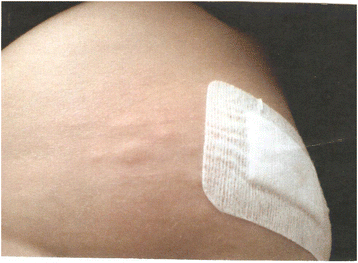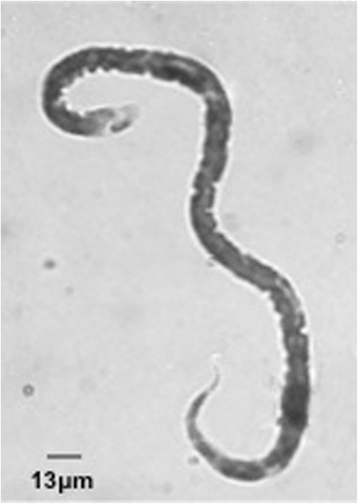Dirofilaria repens microfilariae from a human node fine-needle aspirate: a case report
- PMID: 27266512
- PMCID: PMC4895828
- DOI: 10.1186/s12879-016-1582-3
Dirofilaria repens microfilariae from a human node fine-needle aspirate: a case report
Abstract
Background: Human dirofilariosis is still a little known infection even in endemic areas. Dirofilariosis is zoonotic infection usually abortive in humans; instead, we report a very rare case (the 4th in the world), the first in Italy, in which at least two infective larvae became mature adults that mated and produced active microfilariae even though they did not reach peripheral blood.
Case presentation: A 30-year-old Italian woman presented with a transient oedematous swelling on the left abdominal wall with a creeping eruption followed by the occurrence of a subcutaneous nodular painless mass in the iliac region. One month later, a similar temporary swelling appeared on the contralateral inguinal region associated with intermittent joint discomfort in both knees. The patient had recently travelled abroad, therefore many possible diagnoses were to be ruled out. Routine laboratory investigations revealed eosinophilia. An ultrasound examination of the iliac swelling evidenced a well-defined cyst with a big filamentous formation in continuous movement. A fine-needle aspiration of the lesion was performed for parasitological, cytological and histological exams. The prompt microscopic examination of the aspired material showed the presence of numerous microfilariae that were initially morphologically attributed to Mansonella ozzardi. Subsequently, the revision of the Giemsa stained film and molecular analyses of the biological material, allowed to identify Dirofilaria repens as etiological agent of infection.
Conclusions: We report of a case in whom microfilariae were detected in fine-needle aspirate of subcutaneous node, without evidence of microfilaraemia, and the infection failed to become fully patent. Therefore we confirm that complete development and fertilization of D. repens worms in human hosts may occur, at variance with what is commonly believed, that Dirofilaria worms cannot fully develop in humans.
Keywords: Dirofilaria repens; Fine-needle aspirate; Immunodiagnostics; Italy; Microfilariae; Microscopy; Molecular diagnostics.
Figures


References
-
- Cancrini G, Gabrielli S. Vectors of Dirofilaria nematodes: biology, behaviour and host/parasite relationships. In: Genchi C, Rinaldi L, Cringoli G, editors. Mappe parassitologiche. Vol. VIII. Dirofilaria immitis and D. repens in dog and cat and human infections. Napoli: Rolando Editore; 2007. pp. 47–58.
-
- Nozais JP, Bain O, Gentilini M. A case of subcutaneous Dirofilaria (Nochtiella) repens with microfilaremia originating in Corsica. Bull Soc Pathol Exot. 1994;87:183–185. - PubMed
Publication types
MeSH terms
LinkOut - more resources
Full Text Sources
Other Literature Sources
Molecular Biology Databases

